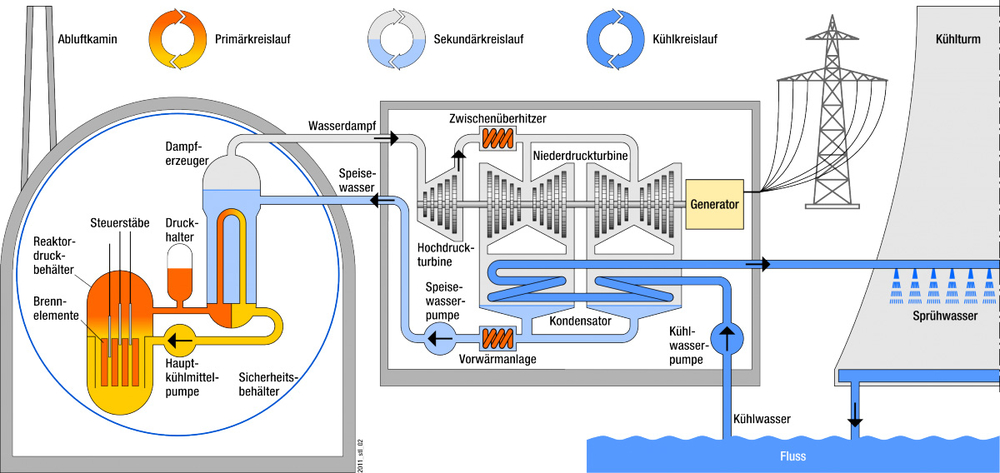Pressurised water reactor (PWR)
A pressurised water reactor plant has two separate circulation systems for the turbine and the reactor: the primary and secondary coolant circuits. The primary system circulates the coolant (water) through the reactor core. Here, in the reactor pressure vessel, fuel rods transfer the energy released by fission, heating the water from around 291 degree Celsius to approximately 326 degree Celsius. Even at these high temperatures, the water does not boil as it is kept pressurised at approximately 157 bar.

The heated water then flows from the reactor pressure vessel into the tubes of a steam generator, which is the "interface" between the primary and the secondary systems. The heat is transferred to the water (feedwater) around the tubes in the secondary system. After the heat transfer in the steam generator, the cooled water in the primary system is pumped back into the reactor pressure vessel. As the pressure on the secondary side of the steam generator is only around 64.5 bar, the feedwater evaporates here at around 280.5 degree Celsius. This produces steam, which is then routed through the turbines. They are connected to a generator that converts the kinetic energy (rotational energy) into electricity. Cool water, flowing through the tubes in the condenser, removes excess heat from the steam, which allows it to condense. The water is then pumped back into the steam generator for reuse. The temperatures and pressures mentioned here are merely examples and may vary depending on the design of the PWR.